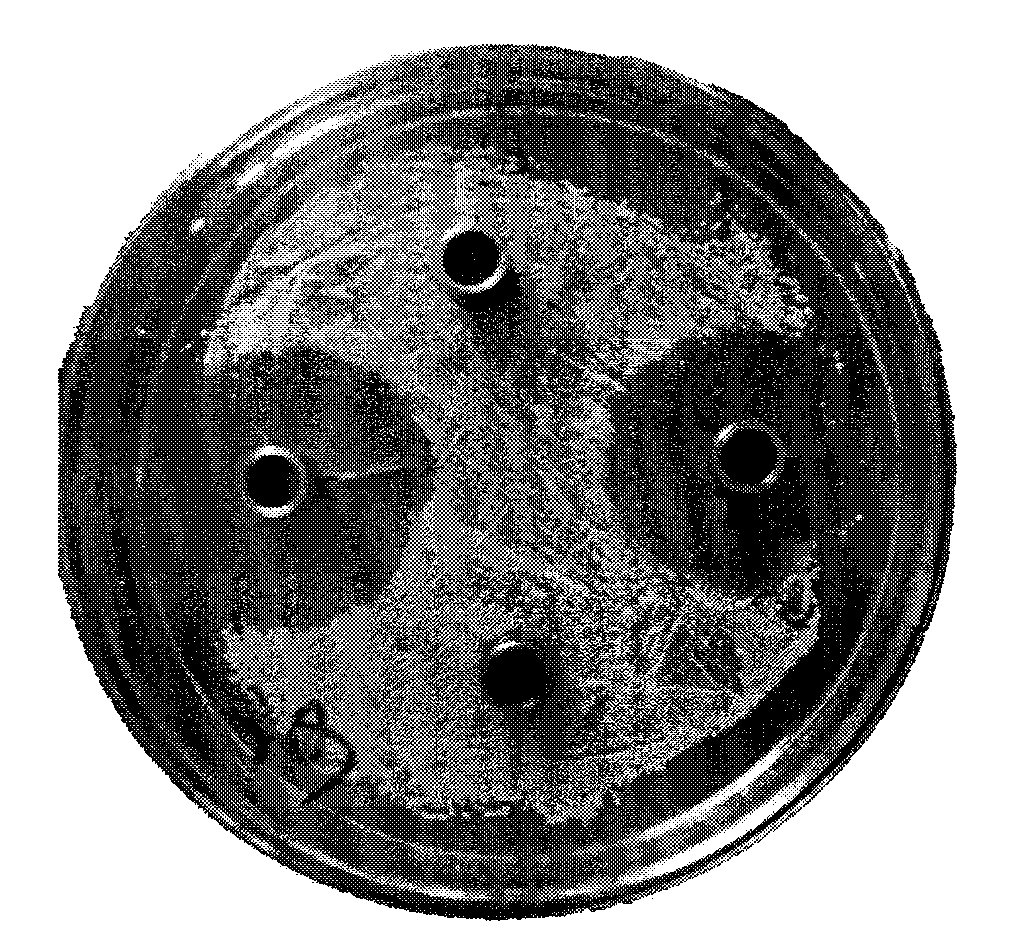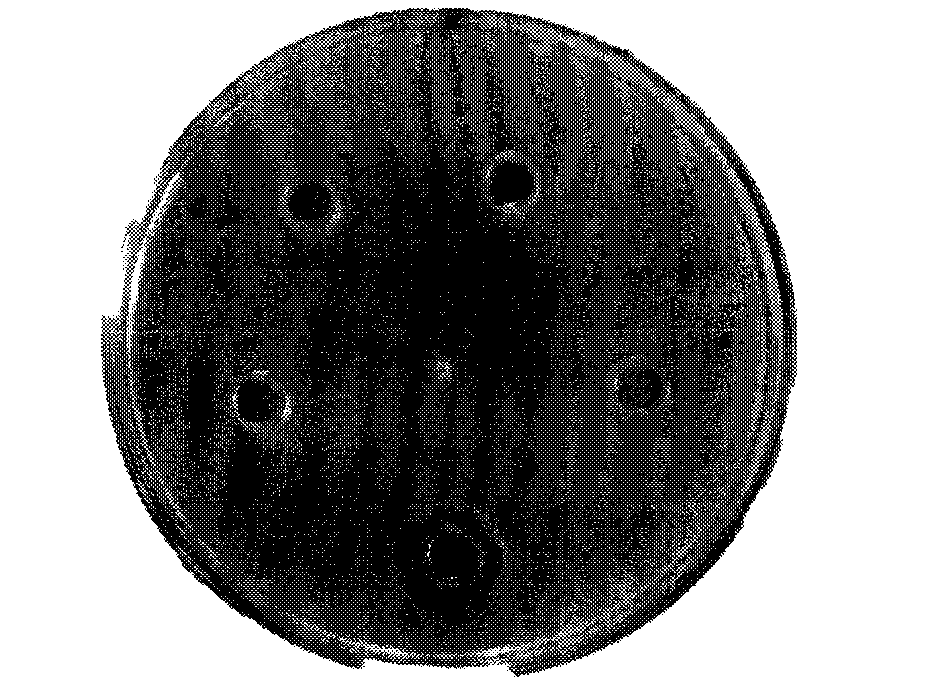Method of determining antagonistic activity of fengycin lipopeptide against fusarium
A fusarium and lipopeptide technology is applied in the field of measuring the resistance of fengycin-like lipopeptides to Fusarium pigmentosa, which can solve the problems of long time, cumbersome methods, inefficiency, accuracy and simplicity, and achieves high efficiency. , the effect of simple operation
- Summary
- Abstract
- Description
- Claims
- Application Information
AI Technical Summary
Problems solved by technology
Method used
Image
Examples
Embodiment 1
[0028] Example 1 Determination of the minimum action concentration of C16fengycin A to cotton wilt (Fusarium oxysporumf.sp.vasinfectum)
[0029] 1. Initial culture of the target strain: select a PSA plate with a fresh cotton wilt strain, dig out a round bacterial block with a diameter of 8mm with a sterile puncher, place it in the center of the sterile PSA plate, and cultivate it at 28°C 48h, at this time the diameter of the bacterial block grows to about 2cm.
[0030] 2. Prepare C16fengycin A solution (a lipopeptide antibiotic with good effect on resistance to filamentous fungi) diluted with sterile PBS (pH=8.5) at half concentration from 2 mg / ml to 125 μg / ml (concentrations are respectively 2 mg / ml ml, 1mg / ml, 500μg / m, 250μg / m, 125μg / ml), 10μl of sample was loaded on each filter paper sheet, each concentration was repeated three times, and the filter paper sheets loaded with different concentrations of C16fengycinA were equidistantly attached to the cotton Around the bacter...
Embodiment 2
[0035] Example 2 Determination of the minimum action concentration of C16fengycin A on cucumber wilt (Fusarium.oxysporumf.sp.cucumerinum) and wheat scab (Fusarium graminearum)
[0036] The difference from Example 1 is that the indicator bacteria are Fusarium.oxysporum f.sp.cucumerinum or Fusarium graminearum, and the culture temperature and culture time: the initial culture is 30 ° C for 48 hours, and the loading The second period of culture condition after C16fengycin A is 10°C for 6 days.
[0037] The operation method is exactly the same as that in Example 1, and the data results obtained at last are shown in Table 2 and Table 3 respectively. Using Minitab 15 to fit the concentration of C16fengycin A and the diameter of the pigment circle, it was found that different concentrations of C16fengycin A promoted the square of the radius r of the pigment circle (r 2 ) and the logarithm (lgM) of the mass M of C16fengycin A on the filter paper sheet are still linearly related, as ...
Embodiment 3
[0038] Example 3 Determination of the minimum action concentration of the novel fengycin family on cotton fusarium wilt (Fusarium oxysporum f.sp.vasinfectum), cucumber wilt (Fusarium.oxysporum f.sp.cucumerinum) and wheat scab (Fusarium graminearum)
[0039] The difference from Example 1 is that the fengycin antibiotic is a novel fengycin family antibiotic, and the difference from fengycin A is that the sixth amino acid in the lipopeptide ring is substituted by Abu for Ala, and the indicator bacterium is cotton wilt (Fusarium oxysporum f.sp .vasinfectum), Cucumber Fusarium wilt (Fusarium.oxysporum f.sp.cucumerinum) or Wheat Scab (Fusarium graminearum);
[0040] The operation method is exactly the same as that of Example 1, and the corresponding relationship between the finally obtained pigment circle and concentration is consistent with that of Example 1.
PUM
| Property | Measurement | Unit |
|---|---|---|
| concentration | aaaaa | aaaaa |
| diameter | aaaaa | aaaaa |
| diameter | aaaaa | aaaaa |
Abstract
Description
Claims
Application Information
 Login to View More
Login to View More - R&D
- Intellectual Property
- Life Sciences
- Materials
- Tech Scout
- Unparalleled Data Quality
- Higher Quality Content
- 60% Fewer Hallucinations
Browse by: Latest US Patents, China's latest patents, Technical Efficacy Thesaurus, Application Domain, Technology Topic, Popular Technical Reports.
© 2025 PatSnap. All rights reserved.Legal|Privacy policy|Modern Slavery Act Transparency Statement|Sitemap|About US| Contact US: help@patsnap.com



